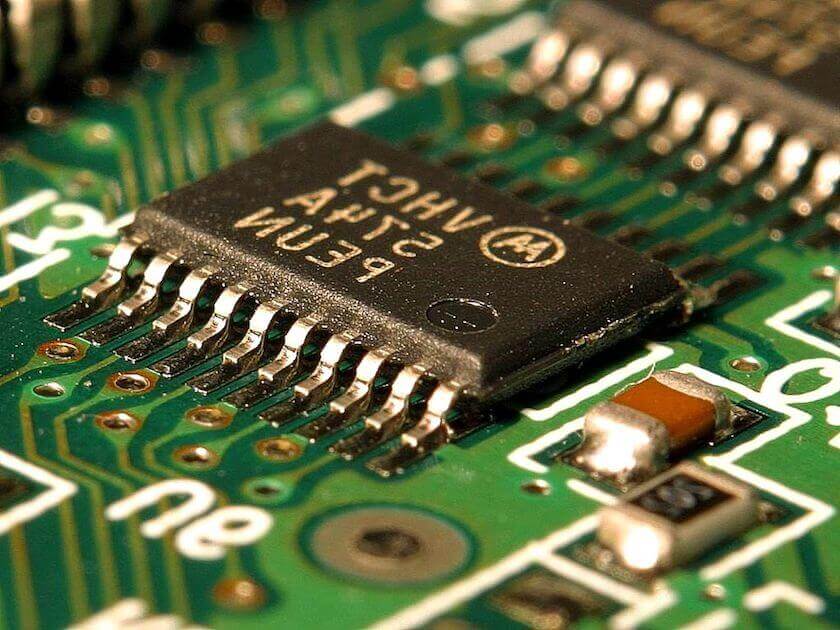Today we are taking one more step further in talking about the motherboard internals. If you know what a motherboard deep down is and the basic info about the various components in it; then you must have already had a wee knowledge of what chipsets are.
But anyways this article is for all you enthusiasts and will most certainly cover everything you should know of chipsets.
If any case you are new to the entire concept of motherboards may be you should probably try this first: Basic Guide In understanding Motherboards.
What are Chipsets?
Simply to answer it in a single shot, Chipset is the glue that binds the CPU to all the other components on the motherboard.
To elaborate, it is a set of chips which have a specific function. After they were introduced in 1986, the number of chips in a chipset significantly got decreased with advancements and now you would find these two chips: The Northbridge and Southbridge which make up your motherboard’s chipset.
You can even find chipsets in which even these two chips are integrated into one big chip and are the chipset of that motherboard.
Chipsets, however, are not only limited to computers but are present in smart phones, wireless network components and many other electronic devices which include a CPU.
What Are Chipsets For?
While the CPU is designed in order to perform all the complex calculations, chipsets work behind the scenes and manage various components that are connected to its chips.
Whatever the CPU wants to communicate with the components it first has to rely on the chipset. Simply, it manages all interactions on the motherboard and how it does that is through its chips.
North Bridge:
The North bridge connects to the CPU via an FSB (Front Side Bus). The components which can deliver transfer speeds close to the pace of the CPU are also attached to the north bridge.
In modern computers, these are the RAM and PCI-Express bus. Generally, most memory requests are routed to RAM but not all of them.
A memory controller present in the Northbridge decides where the memory requests must go to; whether to the RAM or the PCI-e bus. This decision is made utilizing the memory address map.
South Bridge:
The much slower buses connect to the south bridge, due to this it is much slower in its operations than the North bridge. Usually among the connected buses are the USB, PCI, IDE, and LAN, audio, drivers and hard disk connections.
In the more recent times, Intel began manufacturing CPUs which have integrated both North Bridge and South Bridge into a single unit called the PCH (Platform Controller Hub).
Chipset Manufacturers and A Big Misconception:
Owing to the complicated nature of the design of chipsets, there are only a handful of companies that are involved in this business.
Also, the common misconception among people that both motherboard and chipset should be from the same manufacturer have added up to their woes.
‘A motherboard manufactured by Intel doesn’t need to necessarily have an Intel Chipset!!’
All the motherboard manufacturers buy chipsets from chipset manufacturers and build their motherboards. But once the motherboard is built chances are few and far you get to change the chipsets. VIA, NVIDIA, ATI are among the companies which manufacture chipsets.
But once the motherboard is built chances are few and far you get to change the chipsets. VIA, NVIDIA, ATI are among the companies which manufacture chipsets.
Conclusion:
Like stated earlier, chipsets are built for the kill. The functionality of a chipset varies in different applications. In a computer it is the motherboard’s spinal cord, in a smart phone it offers GPS capabilities, in Wi-Fi devices it controls the amount of data the device broadcasts in form of radio waves. It is different in a printer, a scanner and hence the design of a chipset in not specific and is totally application dependent.
In a computer it is the motherboard’s spinal cord, in a smart phone it offers GPS capabilities, in Wi-Fi devices it controls the amount of data the device broadcasts in form of radio waves. It is different in a printer, a scanner and hence the design of a chipset in not specific and is totally application dependent.
It is different in a printer, a scanner and hence the design of a chipset in not specific and is totally application dependent.


